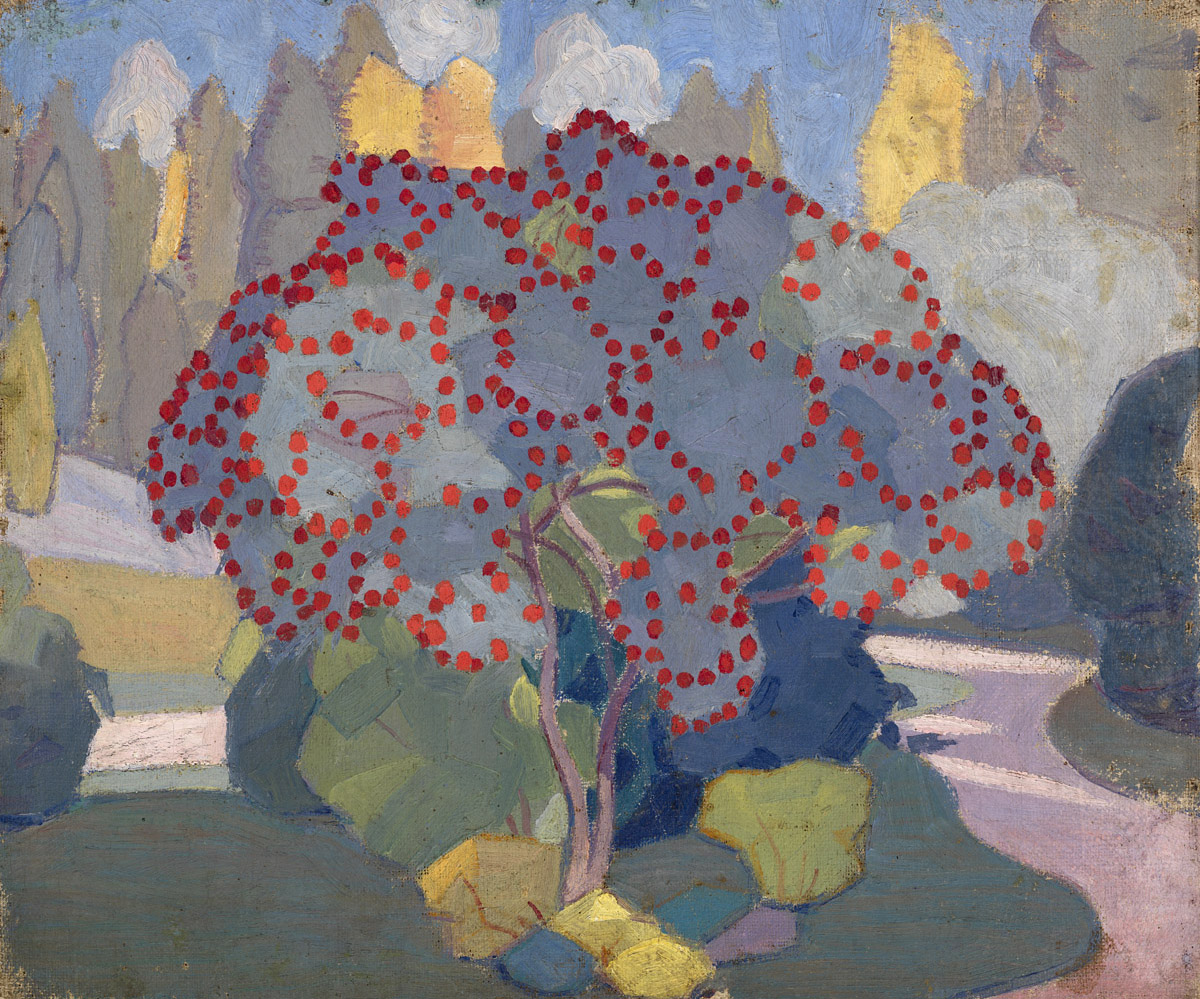MacDougall Auctions 2-3 December 2009
2 December 2009

* 231. BOGOMAZOV, ALEKSANDR 1880-1930
Apple Tree inscribed with authentication by the artist's daughted Ya. Ivanova (Bogomazova) on the reverse
Oil on canvas, laid on board, 34 by 40.5 cm.
150,000-200,000 pounds
Provenance: The Rubenstein collection.
Thence by descent.
Private collection, Europe.
Aleksandr Konstantinovich Bogomazov was a painter and graphic artist, the author of works on the theory of painting and chromatics, a remarkable teacher, one of the brightest representatives of cubo-futurism in Russia and without any doubt a major Ukrainian avant-gardist.
He studied for a short time under Fyodor Rerberg in Moscow (1907), and during the years 1902–1905 and 1907–1911 he attended the Kiev Art School, where he got to know Aleksandra Exter, Aristarkh Lentulov and Aleksandr Arkhipenko. In 1908, along with Natalia Goncharova, Mikhail Larionov and Vladimir Baranoff-Rossiné, he took part in the key exhibition Zveno (Link) organised by Nikolay Kulbin and David Burliuk. As early as 1914 he exhibited 88 paintings and drawings at the Koltso (Ring) exhibition in Kiev, of which he was one of the organisers. It was at the same time that Bogomazov completed his famous theoretical work Painting and the Elements.
In his artistic endeavour Bogomazov paid homage to almost all the main stylistic trends of the start of the XX century: one can note realism, symbolism, impressionism, combined with pointillism, and then on to cubo-futurism and right up to abstract. Although Bogomazov’s artistic style developed along the same channels as the efforts of many of his contemporaries and under the obvious influence of the Italian Futurists (like other Ukrainian artists, Bogomazov was introduced to their innovatory works by Exter), it is impossible to ignore the unique individuality of this artist’s style.
The work presented for the auction is decorative in the very depth of its essence. It is laconic and severe (revealing his enthusiasm for Japanese artists), but unusually expressive, a feature that distinguishes Bogomazov’s finest works. There is a frontal nature to the composition and a certain conventionality in the image in which everything is subordinate to a single internal rhythm. The artist uses individual details that are flattened and geometric to build up this picture of life, rather like putting together a puzzle. (One can recall the early landscapes of Aristarkh Lentulov, Bogomazov’s fellow-student at the Kiev Art School, which have a certain affinity to this work.) The paler background is composed of a rhythmic combination of coloured blotches against which the monumental silhouette of a tree rears up, with Bogomazov’s characteristic painting made up of lilac outlines; bright, saturated green; blue, yellow and violet tones; and his obligatory red-orange accents; in this case they give the landscape an elegant ornamentality, on the one hand, and an artistic and meaningful completeness, on the other.
Later on, Bogomazov moved from monumental static images to the idea of continuous internal movement, and then on to abstract art. Nevertheless, all his works show the artist’s characteristic expressive use of colours, his heightened ornamentality and his artistic endeavour.
Despite its importance in understanding the development of artistic avant-garde in Russia and Ukraine, Bogomazov’s legacy is to a certain extent uncoordinated and his works are rarely encountered outside museums and exhibitions. This landscape, which in all probability dates to the end of the 1900s and the early 1910s, provides the opportunity for another meeting with a unique artist and the chance to look at and evaluate his output in a new light.
Yulia Rybakova, Expert
Notes on symbols:
* Indicates 5% Import Duty Charge applies.
Ω Indicates 20% Import Duty Charge applies.
§ Indicates Artist's Resale Right applies.
† Indicates Standard VAT scheme applies, and the rate of 20% VAT will be charged on both hammer price and premium.